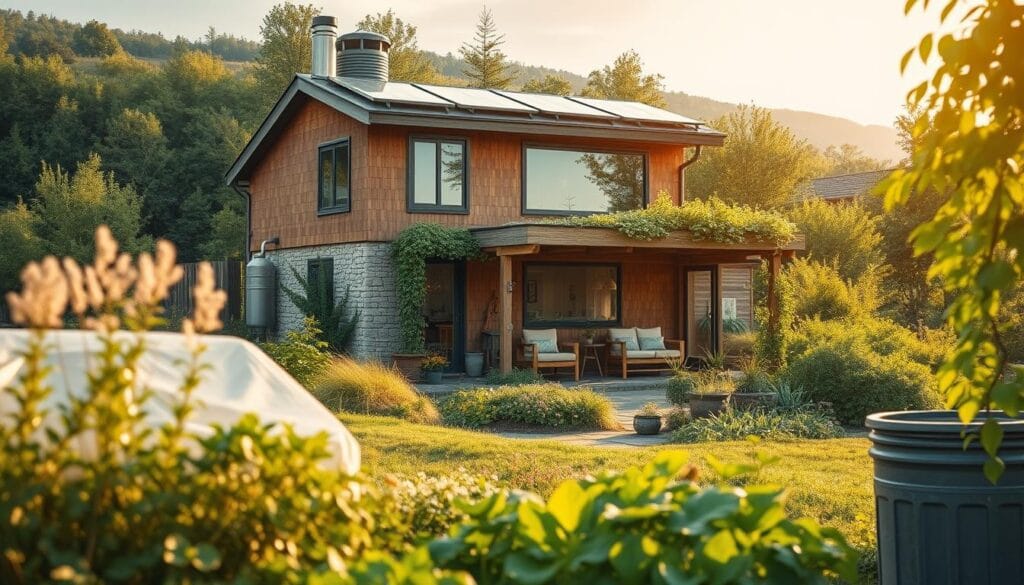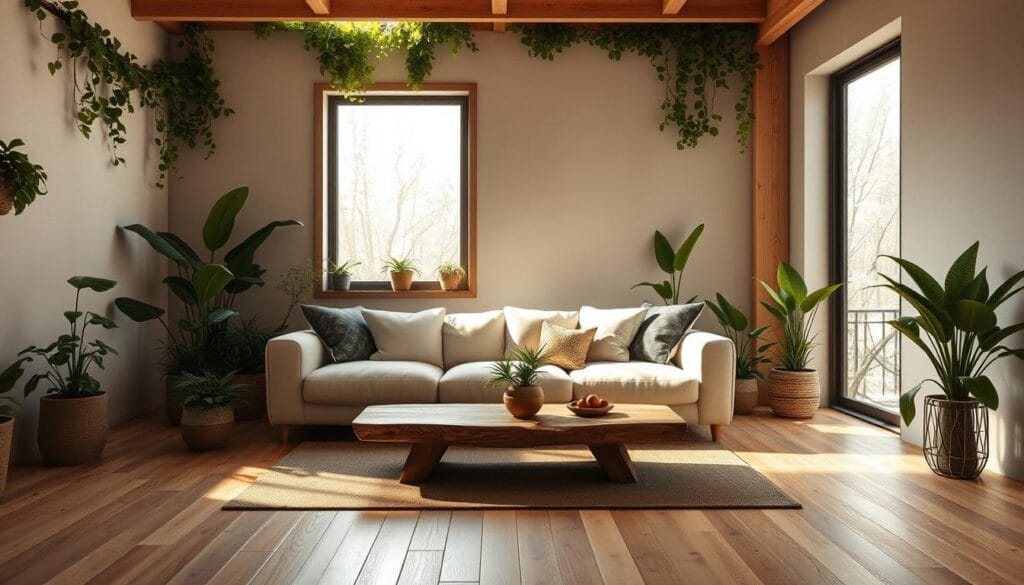Have you ever looked at an old cardboard box or a stack of used paper and wondered what else it could become? Every item we discard has the potential to be transformed into something beautiful and useful. By embracing creative crafting, we can turn everyday materials into treasures while making a positive impact on the planet.
From repurposing old fabric to upcycling paper, these small steps can significantly cut down on waste. Using recycled materials not only saves resources but also sparks creativity. It’s a win-win for both the environment and your imagination.
Join us as we explore how simple, thoughtful crafting ideas can bring joy to your home and contribute to a healthier Earth. Let’s get started on this inspiring journey together!
Introduction: Embracing Eco-Friendly Crafting
In a world where waste is growing, turning everyday items into something new is more important than ever. Creative crafting isn’t just about making things—it’s about rethinking how we use materials. By choosing sustainable practices, we can make a real difference.
Understanding the Movement Towards Sustainability
Eco-friendly crafting is more than a trend—it’s a way to protect our planet. Every item we repurpose reduces the need for new materials. This helps cut down on packaging waste and lowers our impact on the environment.
Using sustainable techniques also supports ethical production. When we craft by hand, we ensure that every step is thoughtful and responsible. It’s a small but powerful way to contribute to a cleaner, healthier world.
Why Handmade Projects Matter
Handmade items carry a unique charm and purpose. They remind us that creativity and responsibility can go hand in hand. By choosing to craft with care, we not only create beautiful things but also inspire others to do the same.
Let’s embrace this movement together. Every project we take on is a step toward a brighter, more sustainable future. Let’s make it count!
Benefits of Sustainable Handmade Projects
Choosing to craft with purpose can transform not just materials but also our impact on the planet. When we focus on sustainable practices, we unlock benefits that go beyond the finished product. Let’s explore how these projects can make a difference in our lives and the world around us.
Positive Impact on the Environment
One of the biggest advantages of sustainable crafting is its positive effect on the environment. By using recycled materials, we reduce waste and lower carbon output. For example, handmade items often have a 30% smaller carbon footprint compared to mass-produced goods.
Renewable resources play a key role here. When we use materials like reclaimed wood or natural fibers, we make better use of valuable resources. This not only helps manage waste but also supports eco-friendly production methods.
Cost Savings and Enhanced Creativity
Another benefit is the potential for cost savings. Crafting with recycled materials can cut expenses by 20-30%. This makes it a budget-friendly option for those looking to create beautiful, functional items.
Beyond savings, sustainable crafting sparks creativity. It encourages us to think outside the box and find new uses for everyday items. This creative option not only enhances our skills but also brings a sense of fulfillment.
By embracing these practices, we can make a positive impact on our lives and the planet. Let’s continue to craft with care and purpose, one project at a time.
Essential Materials for DIY Sustainability
When it comes to crafting, the materials we choose can make a big difference. Opting for sustainable options not only helps the planet but also ensures a healthier process. Let’s explore some of the best materials to use for a positive impact on the environment.
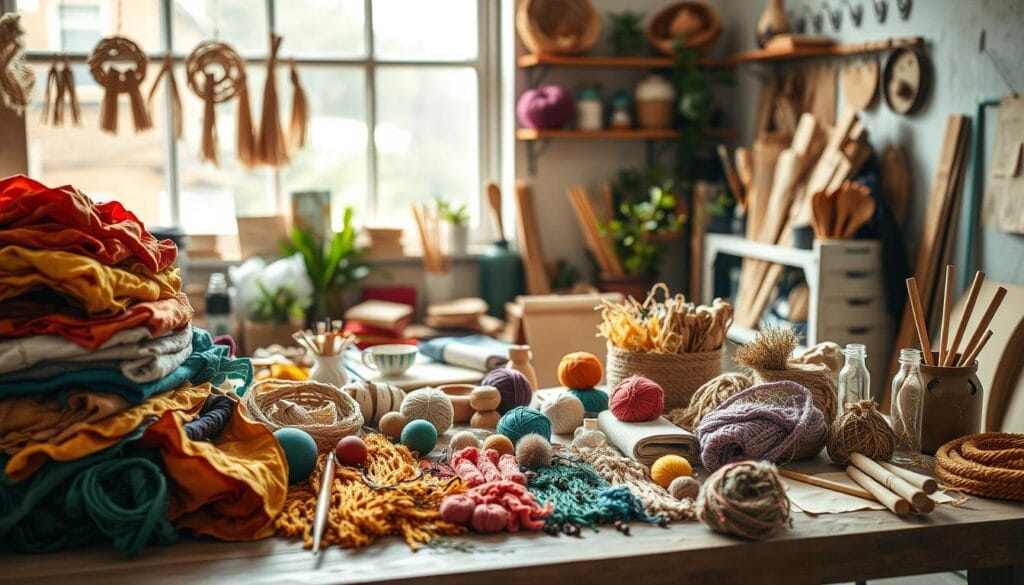
Sustainable Material Options
Natural fibers like organic cotton and bamboo are excellent choices. They are grown without harmful chemicals, making them safer for both the environment and your health. Recycled resources, such as reclaimed wood and glass, also play a key role in reducing waste.
Here’s a quick comparison of some popular sustainable materials:
| Material | Benefits | Common Uses |
|---|---|---|
| Organic Cotton | Chemical-free, biodegradable | Clothing, bags |
| Bamboo | Fast-growing, renewable | Furniture, textiles |
| Recycled Glass | Reduces waste, durable | Decorative items, containers |
| Reclaimed Wood | Prevents deforestation, unique | Furniture, home decor |
Eco-Friendly Textiles and Recycled Resources
Choosing eco-friendly textiles like hemp or linen can significantly lower your impact on the environment. These materials require less water and energy to produce compared to conventional fabrics. Recycled resources, such as glass and paper, are also great for creative projects.
By incorporating these materials into your practice, you can create beautiful, functional items while supporting a healthier planet. Let’s make every craft count!
Sustainable Techniques and Eco-Friendly Practices
Transforming everyday items into something new doesn’t just spark creativity—it helps the planet too. By adopting eco-friendly techniques, we can make a meaningful difference in our home and the world. Let’s explore some practical ways to incorporate these practices into your daily life.

Upcycling and Repurposing Tips
Upcycling is a fantastic way to breathe new life into old items. Here are some simple steps to get started:
- Turn glass jars into storage containers: Clean and decorate them for a stylish way to organize small items.
- Repurpose old furniture: A fresh coat of paint or new upholstery can transform a worn-out piece into a statement product.
- Create art from scrap materials: Use leftover fabric, paper, or wood to design unique wall decor.
These ideas not only reduce waste but also add a personal touch to your space.
Using Natural Dyes and Non-Toxic Finishes
Natural dyes and non-toxic finishes are safer for both you and the environment. Here’s how to incorporate them into your projects:
- Experiment with natural dyes: Use ingredients like turmeric, beetroot, or avocado pits to create vibrant colors for fabrics.
- Choose non-toxic finishes: Opt for beeswax or plant-based oils to protect and enhance wood surfaces.
- Explore eco-friendly paints: Look for low-VOC or zero-VOC options to minimize harmful emissions.
These practices ensure your creations are as safe as they are beautiful.
By embracing these techniques, you can make a positive impact on your home and the world. Every small step counts, and together, we can create a more sustainable future. Try these ideas today and see how easy it is to craft with care!
DIY Sustainability: Handmade Projects That Reduce Your Carbon Footprint
Crafting with purpose opens doors to innovative solutions that benefit both creativity and the planet. By focusing on eco-friendly practices, we can make a significant difference in our daily lives. Let’s explore how simple changes can lead to big impacts.
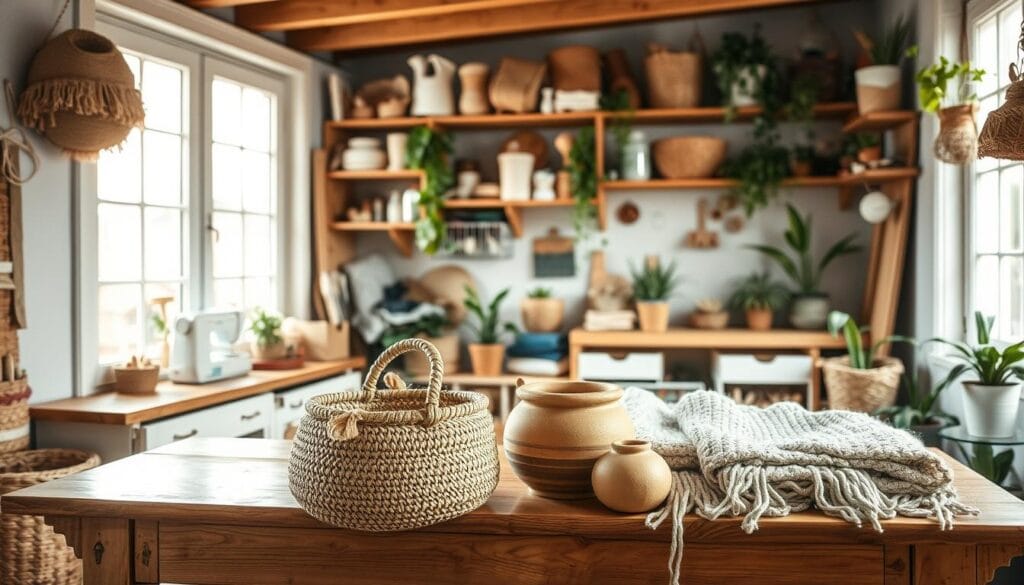
One of the best ways to reduce waste is by cutting down on plastic use. For example, replacing plastic bags with reusable fabric totes is a small but powerful step. This not only minimizes pollution but also promotes the use of sustainable materials like cotton or hemp.
Another opportunity lies in repurposing old items. Turning worn-out clothes into quilts or cleaning rags is a creative way to extend their life. This technique not only saves money but also reduces the need for new materials.
Choosing natural fibers over synthetic ones is another smart move. Fabrics like linen and wool are biodegradable and require fewer resources to produce. By opting for these materials, we can lower our environmental impact while creating beautiful, functional items.
These practices not only help the planet but also inspire personal growth. The hands-on nature of crafting boosts creativity and resourcefulness. It’s a rewarding way to make a positive change while enjoying the process.
Ready to dive in? Explore more detailed project ideas that focus on thoughtful design and eco-friendly practices. Every step we take brings us closer to a healthier, more sustainable future.
For more inspiration, check out our guide on easy DIY stocking stuffers that are perfect for all ages.
Inspiring Listicle of Eco-Friendly Project Ideas
Looking for ways to spark creativity while making a positive impact? Let’s dive into some inspiring eco-friendly project ideas! These activities not only support a greener lifestyle but also bring joy and purpose to your crafting process.

Recycled Paper Crafts and Upcycled Fabric Tote Bags
Start with simple yet impactful projects like recycled paper crafts. Turn old newspapers or magazines into beautiful handmade cards or decorative bowls. This activity is perfect for beginners and helps reduce paper waste.
Another great idea is creating upcycled fabric tote bags. Use old clothes or fabric scraps to design reusable bags. This process not only saves money but also cuts down on plastic use. Here’s how to get started:
- Gather materials: Old fabric, scissors, and a sewing kit.
- Cut and sew: Create a simple tote bag shape and stitch the edges.
- Customize: Add pockets or decorative elements for a personal touch.
These projects support a sustainable lifestyle while encouraging creativity. They’re a fun way to meet the need for eco-friendly alternatives.
DIY Floating Shelves and Home Decor Projects
For those looking to add functionality and style to their homes, DIY floating shelves are a fantastic option. Use reclaimed wood or old pallets to create sturdy, stylish shelves. This activity is both practical and environmentally friendly.
Here are some tips for designing your shelves:
- Measure your space: Ensure the shelves fit perfectly in your room.
- Sand and finish: Use non-toxic finishes to protect the wood.
- Install securely: Use wall anchors for stability.
You can also explore other home decor projects, like repurposing glass jars into planters or creating wall art from scrap materials. These ideas support a sustainable process while adding personality to your space.
By engaging in these activities, you’re not just crafting—you’re making a difference. Let’s meet the need for eco-friendly solutions one project at a time!
Repurposing Waste into Creative Solutions
Everyday waste holds untapped potential for creativity and functionality. By reimagining discarded items, we can create striking, functional pieces that add value to our homes. This approach not only reduces waste but also inspires a creative outlook on consumption.
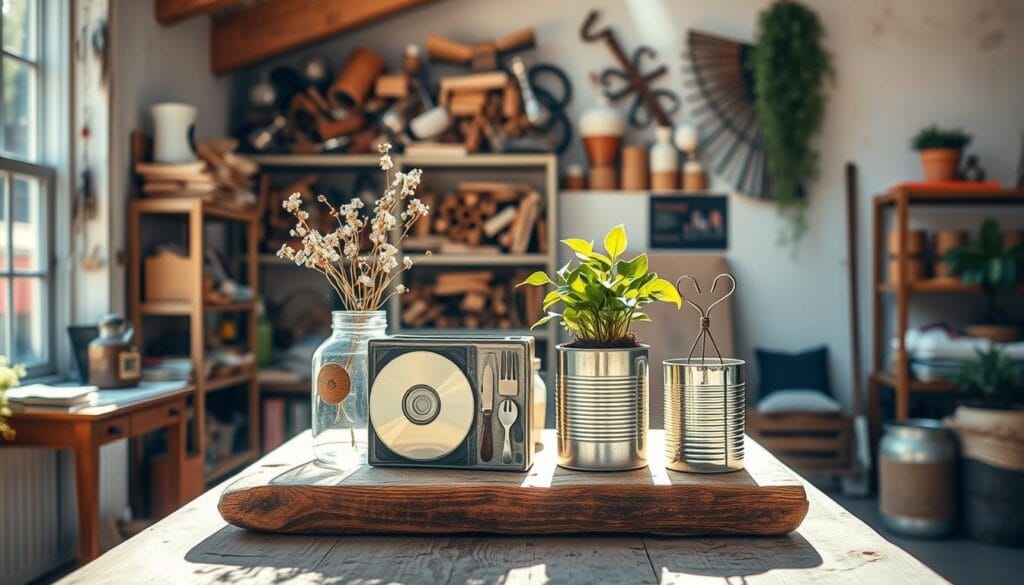
Transforming Waste into Functional Art
Turning waste into art is easier than you might think. For example, a simple glass jar can become a stylish candle holder or a charming planter. Here’s how to get started:
- Clean and prepare: Remove labels and wash the jar thoroughly.
- Decorate: Use paint, twine, or fabric to add a personal touch.
- Repurpose: Fill it with candles, plants, or even storage items.
This eco-friendly practice not only saves money but also reduces the need for new materials. It’s a small step toward a more sustainable lifestyle.
Reusing Packaging for New Creations
Packaging materials like cardboard boxes and plastic containers can be transformed into innovative decor solutions. For instance, cardboard can be cut and painted to create unique wall art or storage bins. Here’s a simple step-by-step guide:
- Gather materials: Collect clean, sturdy packaging items.
- Design: Sketch your idea and cut the material accordingly.
- Assemble: Use glue or tape to bring your creation to life.
By incorporating these eco-friendly practices into your production process, you can make a positive impact on the environment. For more inspiration, check out these upcycling and repurposing ideas.
Repurposing waste isn’t just about saving resources—it’s about reimagining possibilities. Every step you take brings us closer to a more sustainable future. Let’s turn trash into treasure together!
Creating Functional and Stylish Home Accessories
Transforming everyday items into stylish home accessories is easier than you think. With a little creativity, you can turn simple materials into beautiful, eco-friendly decor. These projects not only add charm to your space but also support a greener lifestyle.
Eco-Friendly Candle Making and Natural Containers
Making candles is a fun and rewarding hobby for beginners. Use recycled jars as containers for a sustainable touch. Here’s how to get started:
- Gather materials: Soy wax, wicks, and essential oils.
- Prepare the jar: Clean and decorate it for a personal touch.
- Pour the wax: Melt the wax, add oils, and pour it into the jar.
This alternative to store-bought candles is both stylish and eco-friendly. Plus, it’s a great way to repurpose old jars!
Handmade Holiday Decorations
Adding a personal touch to your celebrations is easy with handmade holiday decor. For beginners, start with simple projects like paper garlands or pinecone ornaments. Here’s a quick guide:
- Collect materials: Use recycled paper, fabric scraps, or natural items like pinecones.
- Design your decor: Cut, paint, or assemble your creations.
- Display with pride: Add these unique pieces to your holiday setup.
These projects are a creative alternative to store-bought decorations. They also make your celebrations more meaningful and sustainable.
Engaging in these hobbys allows you to explore new ideas while reducing waste. Whether it’s candle making or holiday crafting, every project brings you closer to a stylish, eco-friendly home. Let’s get creative and make every accessory count!
Getting Started with Your Eco-Friendly Crafting Journey
Starting your journey into eco-friendly crafting can feel overwhelming, but with the right tips, it’s both fun and rewarding. Whether you’re a beginner or just looking for new ideas, we’re here to guide you every step of the way. Let’s dive into practical ways to begin your adventure in crafting with purpose.
Beginner Tips for a Smooth Start
First, focus on simplicity. Start with small projects like turning a glass container into a planter or creating reusable fabric bags. These projects are easy to tackle and give you a sense of accomplishment. Here’s a quick guide to get started:
- Gather materials: Look for items you already have at home, like old jars, fabric scraps, or cardboard.
- Set up a workspace: Dedicate a small area with good lighting and storage for your tools.
- Experiment and enjoy: Don’t be afraid to try new techniques—crafting is all about creativity!
Finding Local Resources and Support
Local communities often have resources to help you on your journey. Check out craft stores, community centers, or online groups for workshops and material swaps. These spaces not only provide supplies but also inspire new ideas. For example, many cities have eco-friendly crafting meetups where you can share tips and learn from others.
Another great resource is your local recycling center. They often have materials like glass, wood, and fabric that you can repurpose. This not only saves money but also supports a positive impact environment by reducing waste.
Fun Activities to Spark Creativity
Crafting should be enjoyable! Try activities like making candles in recycled jars or designing holiday decorations from natural materials. These projects are perfect for beginners and add a personal touch to your home. Plus, they’re a great way to involve friends and family in your eco-friendly crafting journey.
Remember, every small step counts. By choosing to craft with care, you’re making a meaningful difference for the planet. Ready to get started? Explore more ideas with our guide on DIY wrapping paper ideas that are perfect for any occasion.
Conclusion
Every creative choice we make has the power to shape a healthier planet. By embracing eco-friendly practices, we not only craft beautiful items but also make a positive impact on the world around us. From upcycling materials to choosing natural resources, each step contributes to a greener future.
Using sustainable techniques and materials ensures that our creations leave a minimal environmental impact. Whether it’s repurposing old items or experimenting with natural dyes, these efforts add up to significant change. Together, we can impact the environment in meaningful ways.
Let’s continue this journey of creativity and care. Share your stories and projects with our community, inspiring others to join in. Every small action counts, and together, we can build a brighter, more sustainable world.


